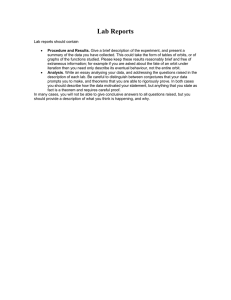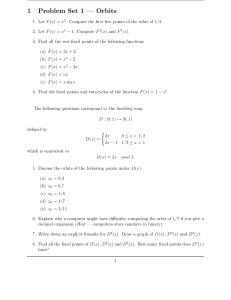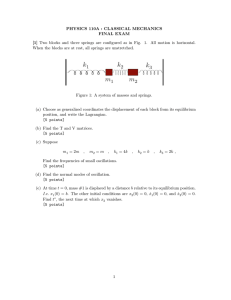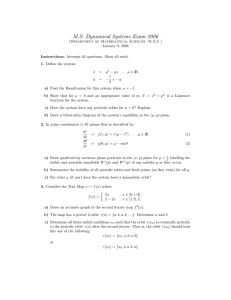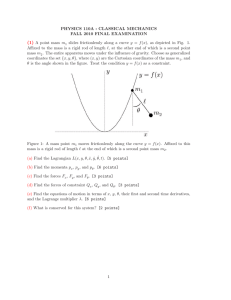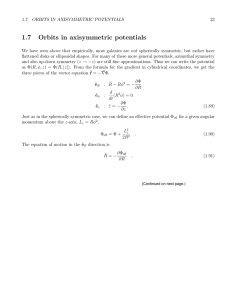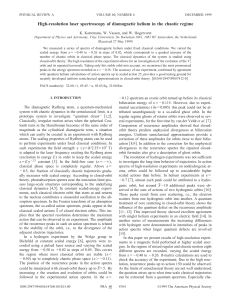MASSACHUSETTS INSTITUTE OF TECHNOLOGY
advertisement
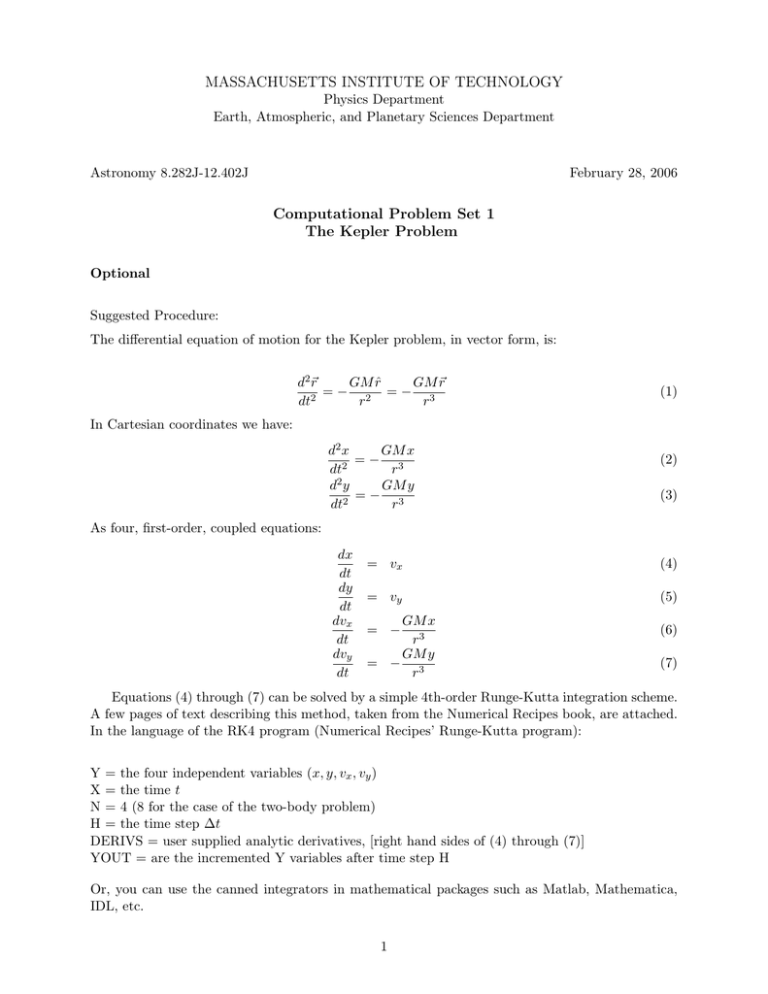
MASSACHUSETTS INSTITUTE OF TECHNOLOGY Physics Department Earth, Atmospheric, and Planetary Sciences Department Astronomy 8.282J­12.402J February 28, 2006 Computational Problem Set 1 The Kepler Problem Optional Suggested Procedure: The differential equation of motion for the Kepler problem, in vector form, is: GM r̂ GM�r d2�r =− 2 =− 3 r r dt2 (1) In Cartesian coordinates we have: GM x d2 x =− 3 2 r dt GM y d2 y =− 3 r dt2 (2) (3) As four, first­order, coupled equations: dx dt dy dt dvx dt dvy dt = vx (4) = vy (5) GM x r3 GM y = − 3 r = − (6) (7) Equations (4) through (7) can be solved by a simple 4th­order Runge­Kutta integration scheme. A few pages of text describing this method, taken from the Numerical Recipes book, are attached. In the language of the RK4 program (Numerical Recipes’ Runge­Kutta program): Y = the four independent variables (x, y, vx , vy ) X = the time t N = 4 (8 for the case of the two­body problem) H = the time step Δt DERIVS = user supplied analytic derivatives, [right hand sides of (4) through (7)] YOUT = are the incremented Y variables after time step H Or, you can use the canned integrators in mathematical packages such as Matlab, Mathematica, IDL, etc. 1 Before carrying out any integrations, it is convenient to cast the equations in dimensionless form. One possible choice of scaling parameters is: [length] → a (semimajor axis) [mass] → M [speed] → ΩK a [time] → 1/Ω� K where ΩK ≡ GM/r3 . The time steps can be made either fixed (e.g., some small fraction of 1/ΩK ), or variable, depending on how rapidly the motion is changing. One possible variable time­step scheme is: Δt = ξ |�r| |v�| or ξ |�r1 − �r2 | |�v1 − �v2 | , (8) depending on whether you are integrating the one­ or two­body problem. The choice of ξ basically determines the approximate number of integration steps that will be taken around an orbit. A choice of ξ = 0.01 should produce rather accurate results. For all three parts, you should display your results graphically. Part 1 For the case of an infinite central mass and an orbiting test mass, integrate a circular orbit and an eccentric orbit. Carry out the integration for several orbits, in both the circular and eccentric orbit cases, to verify that the orbits close. Check that energy and angular momentum are conserved around the orbit. Part 2 Compute the orbits of two objects of comparable (but unequal) mass orbiting their common center of mass. Carry out the calculations for both circular and eccentric orbits. Part 3 Compute the precessing orbit of the mass in Part 1, if the potential is of the form φ=− GM (r − Rg ) (9) where Rg ≡ 2GM/c2 , is the Schwarzschild radius associated with mass M . This is a post­Newtonian potential suggested by Paczynski (1980; A&A, 88, 23) that approximates General Relativistic dy­ namics in strong gravitational fields. Treat every other aspect of the problem with simple Newtonian mechanics. Consider cases where a/Rg = 5, 10, and 50. Make the orbit eccentric enough to be able to discern the precession, but avoid periastron distances near 3 Rg . Expand the potential (or the force) in a series involving terms in Rg ; retain only the first post­Newtonian term. Use this form of the potential to find an analytic expression for the angular precession per orbit. Compare the analytic and numerical results. Finally, for fun, try to produce a circular orbit with r � 3 Rg , and with r � 3 Rg , and contrast the results. 2
